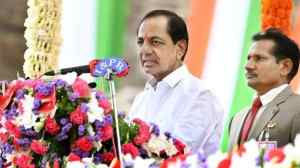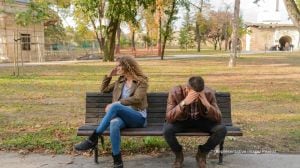Know Your City: Bangalore Club — A mirror of changing society
In its incarnation as the United Services Club, it primarily (though not exclusively) served as a hub for military officers of the British Raj until 1946.
 Located between Lavelle and Residency Road, the Bangalore Club has been in operation since 1868. (Express photo)
Located between Lavelle and Residency Road, the Bangalore Club has been in operation since 1868. (Express photo)
“The sub-committee approves the following irrecoverable expenses being written off” – a handwritten remark in faded ink jotted down at the turn of the 19th century set aside expenses still owed to the Bangalore Club, then known as the Bangalore United Services Club. Several British officers had left unpaid bills – but one among them, a young lieutenant named Winston Churchill, would go on to change world history. The document is on display near the main entrance of the clubhouse today, with the club even having refused an offer from Prince Philip to pay the outstanding amount of Rs 13.
Located between Lavelle and Residency Road, the club has been in operation since 1868. In its incarnation as the United Services Club, it primarily (though not exclusively) served as a hub for military officers of the British Raj until 1946. The central Club House itself predates the Bangalore Club as an association, having previously hosted a polo club. The property seems to have passed through multiple hands through the 1800s, including an array of military officers, an Indian businessman, and Commissioner Sir Mark Cubbon himself. A pale-blue neo-classical building with classical Tuscan columns and a flat roof, the building is one of the oldest of its kind in the city.
The main hall of the clubhouse itself is a step into the past, with antique firearms and swords dotting the wall side by side with hunting trophies. A stuffed leopard in the room also waits to startle the inattentive. Some aspects of this room have remained constant over the years – visitors are asked not to use their phones or laptops there. In 1946, a certain Captain Tidy found himself in hot water for using his typewriter in the hall. Attached to it is the simply named Men’s Bar, which over the years retained the tradition of admitting only men, until 2015. It has seen a great deal over the years – including some episodes that, with classic British understatement, caused demands for an “explanation”. One such anecdote from the minutes of a sub-committee meeting of 1899 describes an Englishman, Mr Hughes, who flouted the rules by sitting on the bar itself. When presented with a notice requesting that gentlemen were not to do this, he proceeded to draw on it.
Despite the largely military origin of the club lending itself to a distinctly male institution, women also found their place in the institution with the changing times. A cottage known as the Dovecot was expanded into the club Annex in 1907, hosting a ballroom and a library among its main facilities. The library itself has been in operation in the club since 1899, even longer than the State Central Library in Seshadri Iyer Hall, while the ballroom still retains its original Burma teak flooring. Women were originally not admitted to the main club, but “elected to the annex”, a practice which continued until the year 1939, when the club officially became a “mixed club”.
 A cottage known as the Dovecot was expanded into the club Annex in 1907, hosting a ballroom and a library among its main facilities. (Express photo)
A cottage known as the Dovecot was expanded into the club Annex in 1907, hosting a ballroom and a library among its main facilities. (Express photo)
Similarly, Indians also began finding their way into the club. The first Indian to use the facilities was the then Maharaja of Mysore. The rules were modified to allow for the membership of Indian military officers in 1915. Three years later, Colonel Desaraj Urs, Commander of the Mysore State Forces, who had led them in World War 1 in the Palestinian Theatre, was the first Indian to become a member of the club. However, until 1939, Indian members were not full members, but honorary members who received all the rights of membership but not voting rights or the right to attend general meetings. In 1939, a vote of club members overturned this rule. As the then secretary T S Kemmis put it, “There can be no question of denying full use of the club to such Indian gentlemen as are socially eligible… the only practical result of the present system… is to leave the latter with a legitimate grievance…”
Visitors walking between the main building and the annex can also see a bell from Burma, brought back to India after the priests of the pagoda it was originally attached to attributed disaster to it. It was knocked down from the pagoda by either a lightning strike or a stray bomb in WW2.
 The central Club House itself predates the Bangalore Club as an association, having previously hosted a polo club. (Express photo)
The central Club House itself predates the Bangalore Club as an association, having previously hosted a polo club. (Express photo)
The list of presidents of the club is also of interest. From generals to bureaucrats, it contains figures such R J Rebello and T P Issar, along with Brigadier R C R Hill, who in his 22-year tenure oversaw the change of the club to its modern incarnation, the Bangalore Club and beyond, having stayed behind after Independence. Another legendary figure on this list is none other than Edward Norton, a member of the 1924 expedition to Everest. Ascending through a gully today known as the Norton Couloir, he made it to a mere 150 metres below the peak before he was forced to turn back. Two days later, his expedition mates George Mallory and Andrew Irvine made their own attempt, never to be seen again. Interestingly, although the club has been in operation since 1868, it is uncertain who the presidents before 1896 were, as no records of the time exist.
Today, the club has a strength of 8,100 permanent members. According to club President Annabelle Manwaring (incidentally, the first woman president of the club), “Many of the old families of Bangalore have been members through the generations. We have maintained the traditions of a British club… with the idea of a certain graciousness, where you think the best of people.”












